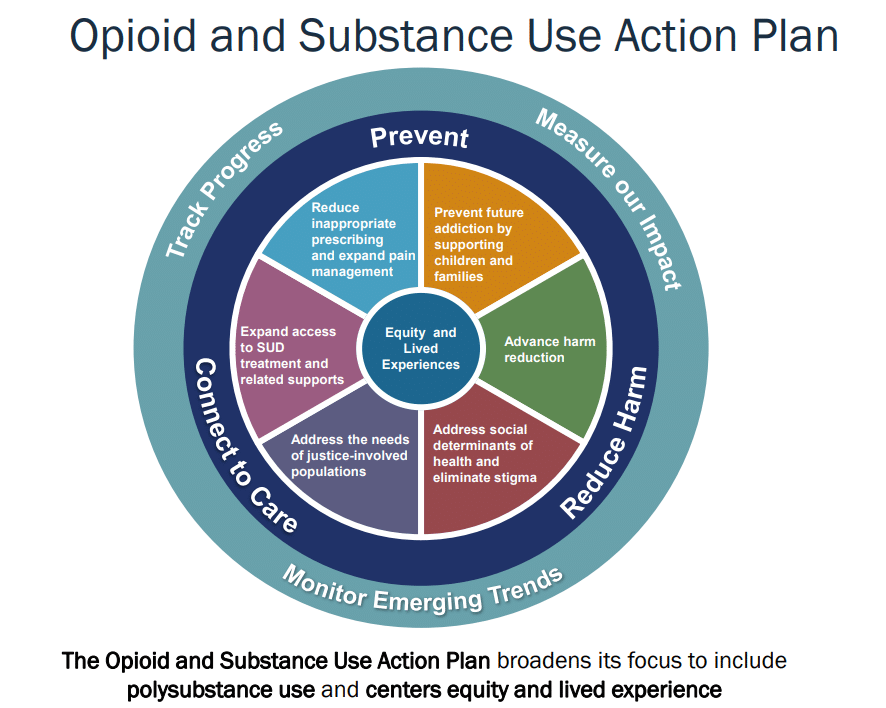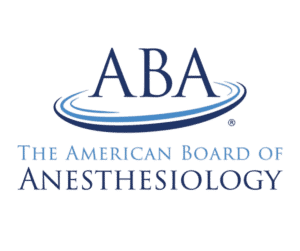Opioid Addiction Treatment Centers in North Carolina
North Carolina’s opioid addiction treatment centers provide services and support for people struggling with opioid dependence and addiction. These centers may offer a variety of treatment options, such as opioid detoxification, medication-assisted treatment (MAT), and counseling.
Even though there are dozens of opioid addiction clinics in North Carolina, not all of them have the expertise, medical equipment, and experience needed to treat opioid dependence. Therefore, choosing the right opioid addiction treatment center in North Carolina is key to making a safe and lasting recovery.
How North Carolina Combats Opioid Epidemic

North Carolina has been fighting the opioid epidemic by implementing the Opioid and Substance Use Action Plan (OSUAP) 3.0. Released in May 2021, OSUAP 3.0 is a follow-up to North Carolina’s Opioid Action Plan (OAP), first developed in June 2017 and updated in June 2019 (OAP 2.0).
Opioid overdose has claimed the lives of more than 13,000 North Carolina residents between 1999 and 2017, with the number of overdose deaths doubling in the past decade. OAP and OAP 2.0 were launched to reduce the supply of opioids, raise community awareness about the opioid crisis, and decrease the rate of opioid overdoses.
Since their implementation, there has been a 36% decrease in opioid dispensing in the state. Also, the number of uninsured and Medicaid beneficiaries receiving opioid addiction treatment in North Carolina increased by 48% since 2017.
OSUAP 3.0 was introduced in May 2021 following a rise in polysubstance overdoses. Besides the broadened focus on polysubstance use, this plan differs from its predecessors in emphasizing the importance of centering equity and lived experiences.

Credit: North Carolina Department of Health and Human Services
North Carolina’s OSUAP 3.0 addresses the opioid epidemic by focusing on the following priority areas:
#1. Equity and Lived Experiences
Equity and lived experiences lie at the very center of OSUAP 3.0. This plan prioritizes identifying and redirecting the systems that have harmed historically marginalized drug users. It also aims to increase access to comprehensive, culturally competent care for marginalized groups.
Moreover, OSUAP 3.0 includes those closest to the issue of opioid addiction and dependence—people with first-hand experiences of substance use and drug addiction—in developing, implementing, and evaluating strategies to combat the opioid crisis.
#2. Prevention
OSUAP 3.0 surmises that the opioid epidemic is closely tied to the intergenerational cycle of trauma. Consequently, it aims to prevent future addiction by supporting children and families in North Carolina through programs designed to address adverse childhood experiences and trauma.
Additionally, OSUAP 3.0 seeks to expand non-opioid pain management options and reduce inappropriate opioid prescribing to prevent opioid abuse and opioid use disorder (OUD).
#3. Harm Reduction
OSUAP 3.0 employs many of the same harm reduction strategies as OAP 2.0, such as training healthcare workers and running stigma production campaigns. However, the harm reduction efforts of the latest opioid action plan move beyond opioids; they’re focused on polysubstance abuse.
As such, OSUAP 3.0 prioritizes expanding healthcare services for people who use multiple substances—such as opioids, benzodiazepines, stimulants, and alcohol—at once. It also seeks to expand access to tools like fentanyl test strips and naloxone kits to reduce drug overdoses.
#4. Increased Access to Treatment
OSUAP 3.0 seeks to increase access to substance use disorder treatment, including opioid addiction treatment centers, in North Carolina. In particular, it aims to expand jail diversion programs to reduce incarceration for drug users, close the Medicaid coverage gap, and increase community-based recovery support.
That said, not all opioid addiction treatment centers in North Carolina offer the same level of quality, care, and safety.
On that note, let’s discuss the differences between opioid detox—one of the most popular yet dangerous procedures performed in North Carolina’s opioid clinics—and the ANR treatment, an ultra-modern opioid dependence treatment developed by Dr. Andre Waismann.
Opioid Detox Treatment vs. ANR Treatment
The difference between opioid detox treatment and ANR treatment is that ANR has a well-defined therapeutic goal: to bring the nervous system back to balance.
Opioid detox, meanwhile, refers to the process of flushing opioids out of the system. Most opioid clinics use medications to facilitate detoxification. For instance, rapid opiate detox uses opioid antagonists like naloxone to trigger the onset of withdrawal. Drugs can also be administered to control withdrawal symptoms and make the withdrawal process more comfortable.

Although dozens of detox centers in North Carolina offer different types of opioid detox treatments—medical drug detox, outpatient detox, etc.—these treatments have a critical flaw: they fail to address the root of opioid dependence.
Therefore, if used alone, they lead to relapse. Unfortunately, it’s not uncommon for people to undergo multiple detox treatments without long-term results.
Conversely, Accelerated Neuro-Regulation (ANR) is a modern, scientifically-backed opioid dependence treatment that tackles the underlying causes of opioid dependence. Since it restores the brain to its pre-addiction state by modulating the endorphin-receptor system, ANR eliminates the risk of ongoing withdrawal symptoms, cravings, and relapse.
Most importantly, ANR is very safe. Unlike opioid detox, it is personalized and adheres to the highest standards of patient safety and care. It can be performed on virtually everyone, including those with complex health conditions.
Opioid detox, on the other hand, comes with numerous risks, ranging from side effects like vomiting to life-threatening complications, such as cardiac arrest.
Research on Opioid Detox in North Carolina
A 2023 study by researchers from the University of Michigan and UNC WakeBrook explored the outcomes in uninsured OUD patients transitioning from inpatient to outpatient treatment.
The study examined 47 opioid detox patients who initiated either buprenorphine-naloxone (BUP-NX) or extended-release naltrexone (XR-NTX) treatment. It found that BUP-NX patients had higher retention rates in outpatient treatment than XR-NTX patients.
Within six months, 75% of XR-NTX patients had dropped out of the treatment; worse yet, one of them suffered a fatal overdose. By comparison, 31% of BUP-NX patients had dropped out by six months. Ultimately, XR-NTX comes with more risks and challenges than BUP-NX.
Furthermore, researchers concluded that opioid addiction treatment centers in North Carolina should incorporate medications for OUD (MOUD) to reduce opioid overdose deaths.
The only foolproof way to eliminate the risk of relapse is to treat the root of opioid dependence. ANR is the first and only opioid dependence treatment designed to do exactly that.
What Is the ANR Treatment Like? What Can You Expect?
The ANR treatment is safe and effective. Many opioid-dependent people hesitate to seek opioid addiction treatment due to the fear of distressing opioid withdrawal symptoms. If you opt for ANR, this won’t be a concern; since it re-regulates the endorphin-receptor system while the patient is sedated, you won’t feel any withdrawal or discomfort during or after the procedure.
The process of the ANR opioid treatment consists of four steps:
- Preparation. Before admission to the hospital, the ANR team will be in regular communication with you to help you prepare for the procedure.
- Regulation. On the morning of the procedure, the medical team at ANR Clinic will perform an extensive medical evaluation and administer pre-medication to ease you into the treatment. Then, you will be placed under deep sedation and receive medication to clear and block opioid receptors. Throughout the four-to-six-hour ANR procedure, you will be treated by an anesthesiologist, a critical care physician, and other board-certified medical professionals.
- Stabilization. Most of our patients are discharged from the hospital the day after undergoing the ANR treatment. Once you return home after a short hospital stay, the ANR team will help you stabilize your endorphin system and make the necessary lifestyle changes.
- Optimization. For lifelong results, keep in touch with ANR Clinic and stick to the recommended diet, exercise routine, and other changes.

ANR costs $20,500, which includes:
- Preparation appointments before the admission
- A personalized treatment plan tailored to your medical history
- Hospitalization in a private room at a fully licensed and accredited state-of-the-art hospital and 24/7 care by expert medical staff
Although ANR Clinic does not currently have an opioid addiction treatment center in North Carolina, it has one in Florida, just a short flight away.
Benefits of Choosing the ANR Treatment For Opioid Dependence
Some of the main benefits of choosing the ANR treatment for opioid dependence include:
- Safety. ANR is scientifically proven to be safe and effective. To maximize safety, the treatment is tailored to each patient’s medical history and carried out only by highly qualified board-certified medical professionals in an ICU setting of accredited hospitals with state-of-the-art medical equipment.
- Treatment duration. While many opioid addiction treatment centers in North Carolina offer programs that take weeks, months, and sometimes even years, ANR can help you overcome opioid dependence in a matter of days. The ANR procedure takes 4–6 hours, whereas the entire hospital stay for ANR patients lasts just 36 hours on average.
- Long-lasting recovery. ANR facilitates lasting recovery by reversing the opioid-induced changes in the nervous system, which negates withdrawal symptoms, including cravings, and eliminates the risk of relapse. Our testimonials speak volumes about ANR’s ability to bring lasting results.
- No opioid replacement drugs. Since ANR eradicates opioid dependence at its root, it doesn’t involve any opioid replacement drugs, such as methadone. Unlike the opioid addiction treatment centers in North Carolina that use MOUD, ANR doesn’t put you at risk of swapping one addiction for another.
If you want to get started with ANR or learn more about the treatment, contact us today for a free, 100% confidential consultation.
Opioid Addiction Treatment Center North Carolina FAQs
ANR treatment is substantially better than rapid detox because it treats the root of opioid dependence instead of merely removing opioids from the system. Most people relapse soon after leaving the rapid detox center; this doesn’t happen with ANR, as it restores normal brain function. ANR has given new lives to nearly 25,000 patients worldwide.
ANR Clinic is located in Arcadia, Florida. The treatment is performed at DeSoto Memorial Hospital, which is renowned for its commitment to safety and quality. Although we do not currently have an opioid addiction treatment center in North Carolina, a short flight to Florida is all it takes for North Carolina residents to access our U.S. center.
ANR treatment is not currently covered by insurance, as it is classified as an elective procedure. However, we are committed to making our treatment accessible to everyone, regardless of their financial situation. Therefore, we offer several financing options to reduce the financial burden.
ANR can treat all types of opioid dependency, regardless of how long you’ve been battling it. The ANR treatment is suitable for those struggling with a dependence on prescription opioids, such as oxycodone, hydrocodone, and tapentadol, as well as for those dependent on illicit opioids like heroin.
The ANR treatment itself takes 4–6 hours, during which the patient is placed under deep sedation. Meanwhile, the average hospital stay for our patients lasts around 36 hours. After being discharged from the hospital, patients can forget about the risk of relapse, as they’ll no longer suffer from cravings and other withdrawal symptoms.







